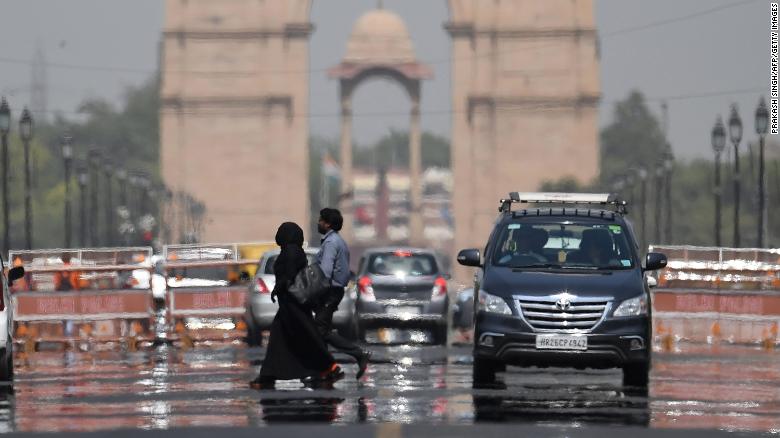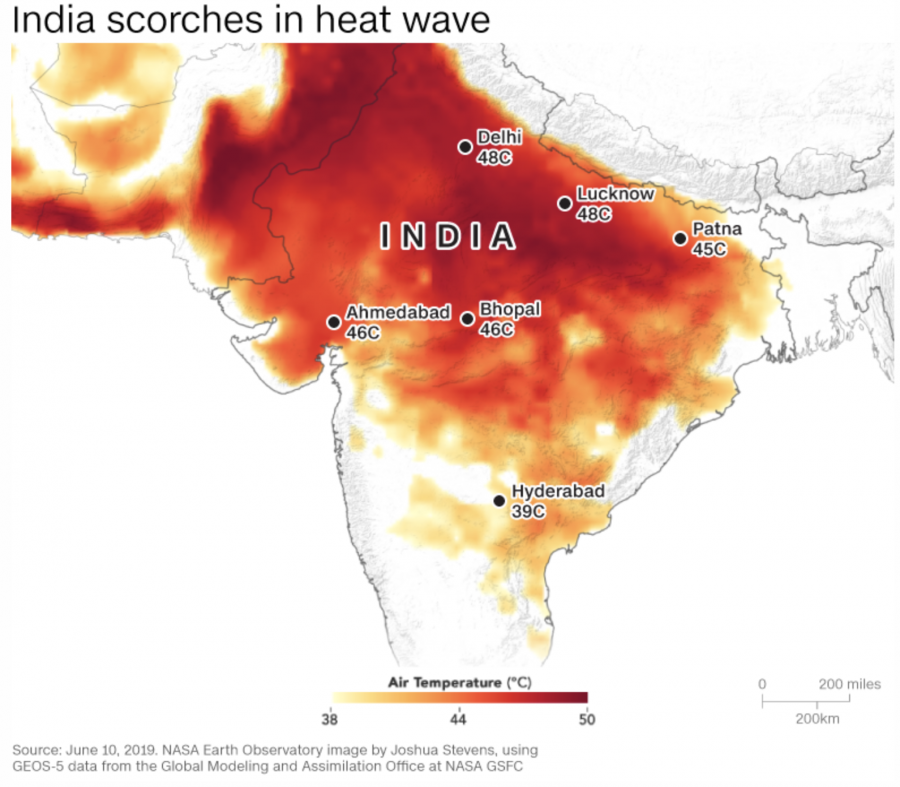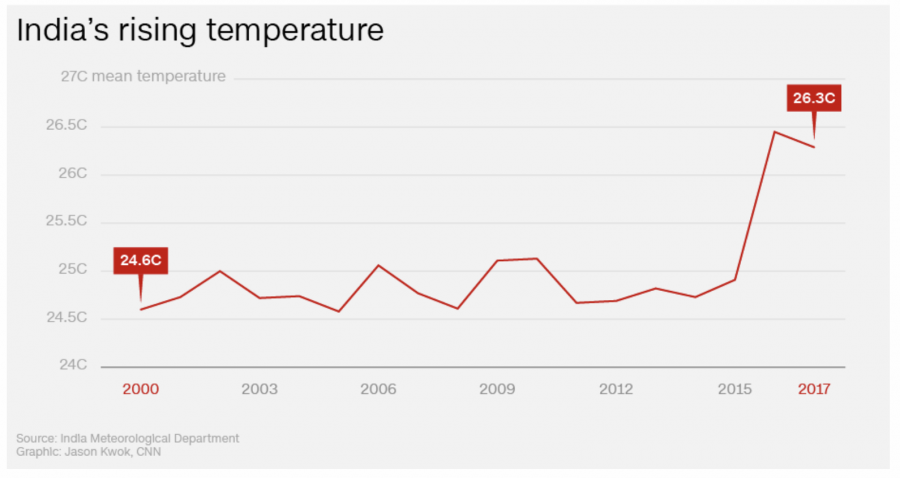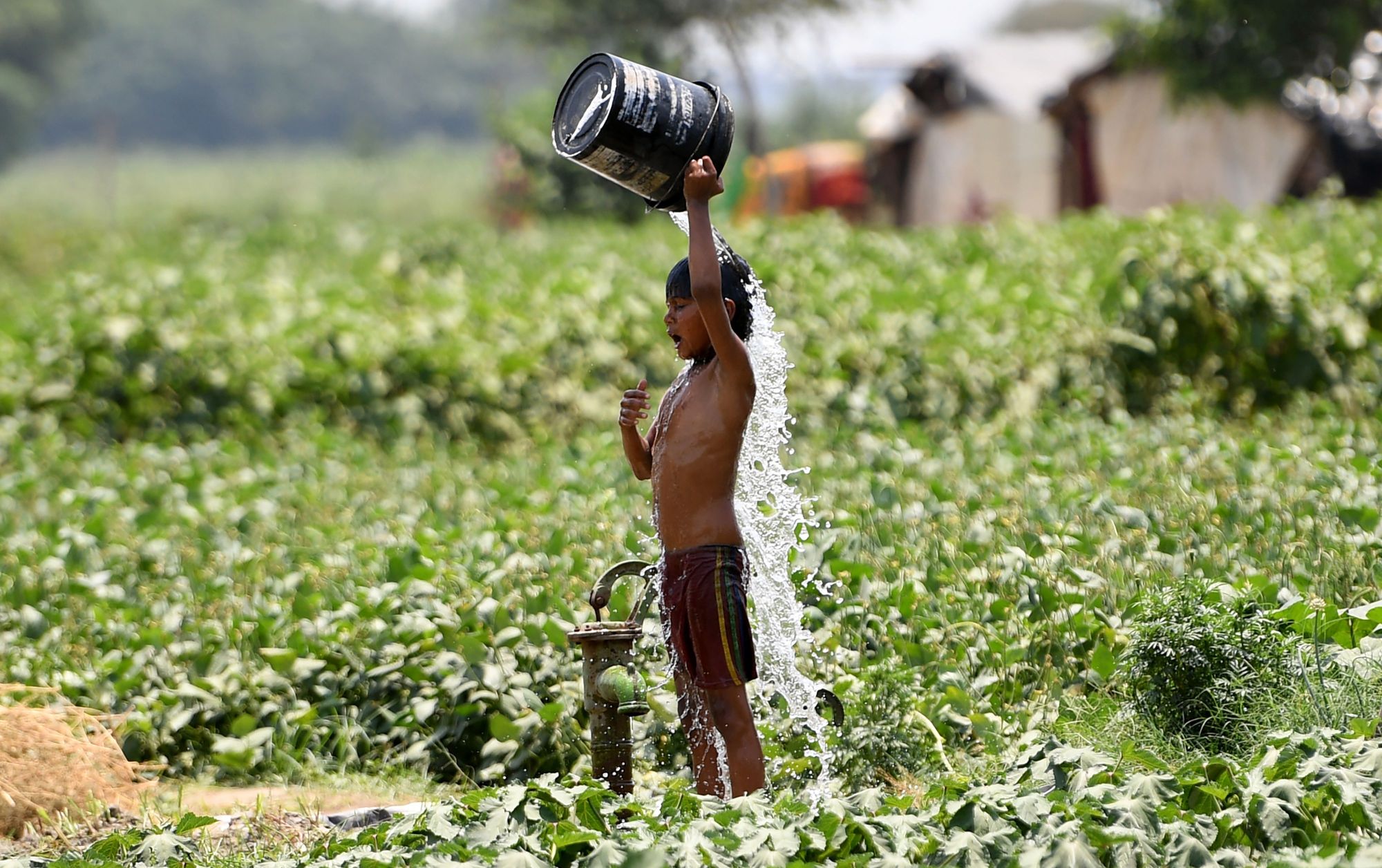Record heatwaves in India typically occur between March and July, when monsoon rains arrive. But in recent years they have become more severe, more frequent and longer lasting.

India is one of the countries assessed to be most affected by the climate crisis according to the IPCC - Intergovernmental Panel on Climate Change.
Experts at the Massachusetts Institute of Technology (MIT) also said that even if the world cuts carbon emissions and curbs average global temperatures, many areas in India will remain extremely hot and challenge human tolerance.

In its latest announcement, the Indian government said that temperatures will rise by at least 4.5 degrees Celsius, exceeding the normal temperature threshold for at least two days. This will be followed by another record heatwave when temperatures rise by 6.4 degrees Celsius over two days.
In several different areas across India, notably the capital New Delhi, temperatures are expected to hover around 45 degrees Celsius for two days.

Last year, there were 484 heat waves across India, a record number compared to 21 in 2010. During that time, more than 5,000 Indians died. This year’s heat wave numbers are expected to be slightly lower.
In June, Delhi hit 48 degrees Celsius, the highest temperature recorded in the month. West of the capital, Churu in Rajasthan almost broke the record with a temperature of 50.6 degrees Celsius.
India’s poorest state, Bihar, has closed all schools and coaching centres for five days after a heatwave killed more than 100 people. The closures were accompanied by warnings to stay indoors on the hottest days, as most Indians work outdoors for their income.
Weather forecasts suggest that the situation in India is getting worse.

In fact, the heatwave in India is not an isolated case. There are many other places around the world that are experiencing various extreme heatwaves, including Spain, China and Zimbabwe.
A report by researchers at MIT says the world's average temperature will rise by 4.5 degrees Celsius by the end of the century. A more optimistic scenario predicts a rise of 2.25 degrees Celsius. The worrying thing here is that both predictions exceed the commitment to limit the increase to only 2 degrees Celsius by 2100 as set out in the Paris Agreement.

Another optimistic prediction is that no region in South Asia will exceed the target temperature by 2100.
The Indian government has also come up with solutions, one of which is to add 500 gigawatts of renewable energy to the country's power grid by 2030.

































